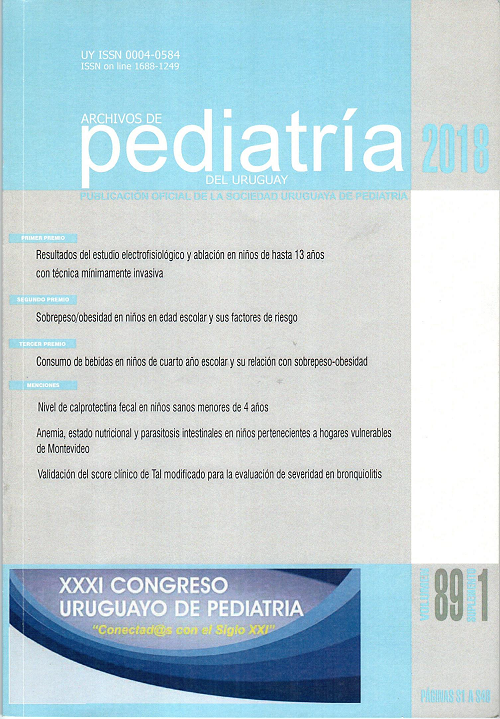Abstract
The electrophysiology study (EPS) and ablation procedure in children are effective and internationally well-defined techniques. They typically use 3 to 5 vascular accesses and endovascular catheters (EVC). We proposed a simplified protocol to reduce these numbers and thus, reduce complications. The study aimed to evaluate the results obtained.
Method: we performed a descriptive, prospective, longitudinal study over 120 consecutive patients up to 13 years of age, with no structural heart disease. The protocol consists in using an esophageal record (IER) when it is useful, having the radiological image of its position on the screen and in continuing to move an EVC to the required position at each time.
Results: age ranged between 7 months and 13 years (mean = 9.5) and 72 (62%) children were male. In 101 (84%) an ablation was attempted and in 19 (16%) EPS. 70% of the ablations were done for accessory pathways, 25% for nodal reentry tachycardia and 5% others causes. The total time of the procedure was 104 ± 55 minutes. In 58 children an IAR was attempted and in 57 it was achieved. In 42% of cases the ablation was made with 1 single access and 94% with 1 or 2 EVCs. In 6 complex cases 3 EVCs were required and 4 in none. There were 15 cases that required >2 accesses. The ablation was effective in 94%. During 51 ± 22 months of follow-up there were 6 (6%) recurrences. One patient had pericarditis, there were no vascular, electrical, or other complications.
Conclusions: with this protocol the results are similar to the conventional series, using a very low number of accesses, catheters and complications rate.

This work is licensed under a Creative Commons Attribution 4.0 International License.
Copyright (c) 2025 Archives of Pediatrics of Uruguay

